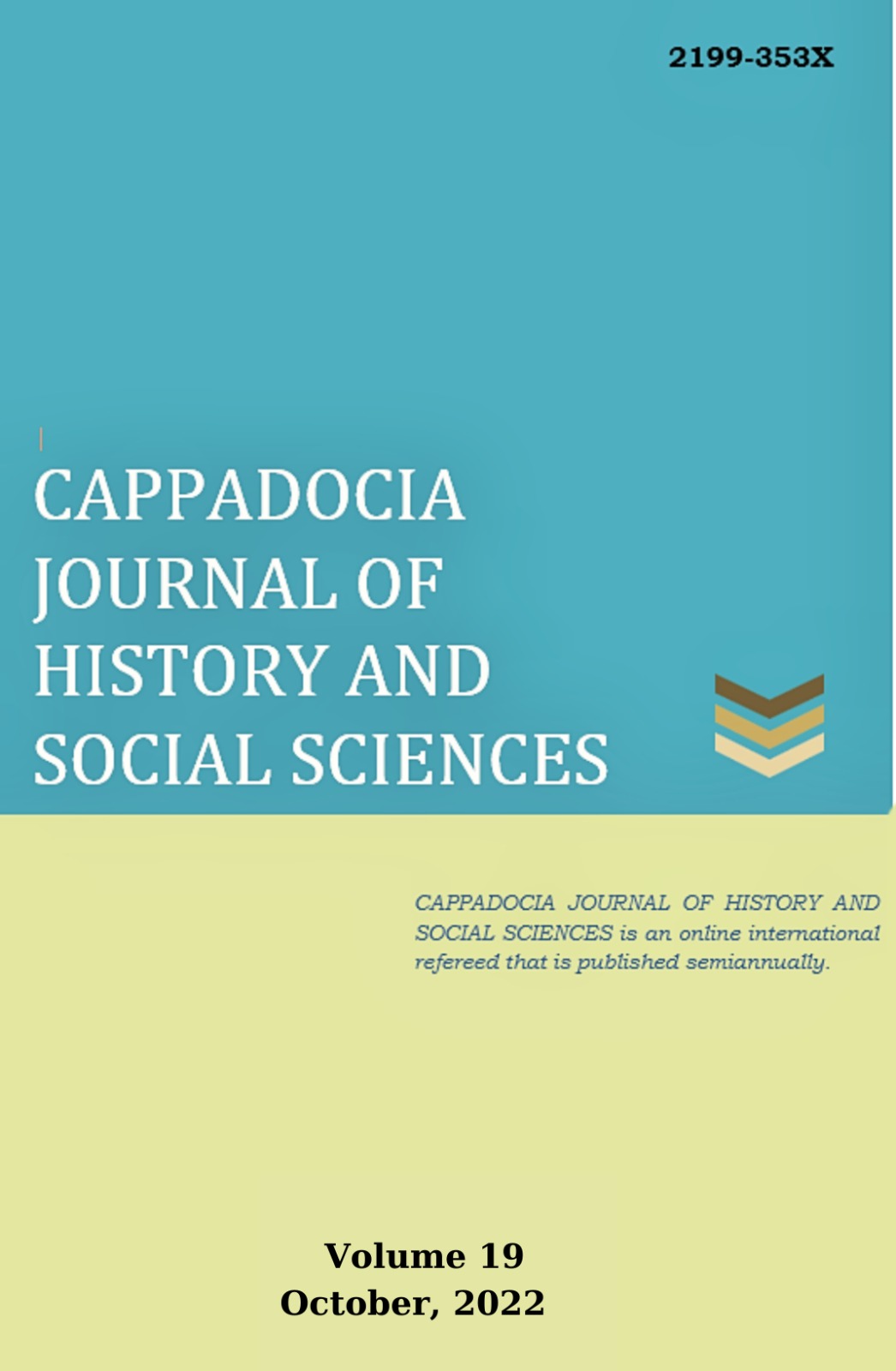Author :
Abstract
ÖZET
Asurlu tüccarların Anadolu’da yaşadıkları süre içinde, yerlilerle olan davalarına oturdukları şehrin kralı tarafından, birbirleriyle olan anlaşmazlıklarına ise, kurmuş oldukları kārum daireleri bakılıyordu. Eğer, kolonilerdeki mahkemeler bu davaları sonuçlandıramazlarsa, Kaniš kārumuna gönderirlerdi. Kaniš kārumu meseleyi çözerdi. Şayet, Kaniš kārumu da problemi çözemez ise, bu defa bu davaları Asur’a gönderiyorlardı. Asur’da Şehir Meclisi kutsal hamrum odasında toplanarak karara varırdı. Meclisin kararı bir belge düzenlenerek Kaniš kārumu’na gönderilirdi. Hamrum adı verilen kutsal odanın Anadolu’daki kolonilerde de varlığına kanıt teşkil eden metinler vardır. Asurlu tüccarlar genelde değerli mallarını ve büyük miktardaki parayı, muameleler yoluyla yazılı kanıtlarla tutuyorlardı. Büyük miktardaki değerleri böyle saklıyorlardı. Mahkeme çağrısı ya da gönüllü hakemle halletmenin sonucu olan kazanma, pratik ve cazip olan şahitlik usulüdür. Sonunda kanıt beyan etmek için şahitler ve hakemlerin toplanması kolay değildi. Bunun sonucu olarak gerçekten duyduklarını hatırlamaları bir karışıklığa sebep olacağından, antlaşma üzerine yapılıyordu. Onlar yazılı kanıt olarak kaydediyorlardı.
Dava konusunu çözmede ilk adım basit bir özel durumla başlıyordu. Geleneksel olarak şahitlik, şahit tutmak olarak anılır. Şahit olan kimse, borçlar ve senetlerle ilgili sözlü olarak yüzleştiriliyordu. Genellikle kısa sorular soruluyordu. İlgili sorular ya da kesin olarak yapması gerekenler isteniyordu. Tutulan kimse cevap vermekten çekinmezdi, taraflar arasındaki kısa diyalogla dava sonuçlanırdı. Bir şahit kesin olarak gerçekleri bilmek zorunda idi, onların sözlerini inkar etmek ya da aksine kanıt getirmek veya taleplere uymak durumunda idi. Bu durum bir ödeme ve ya bir hesap görme ile sonuçlanırdı. Bazen de ödemeyi kabul eder veya ticarî eşyayı teslim ederdi.
Kaniš kārumunun kararları ile ilgili belgelere baktığımızda, bu mahkeme zabıtlarının çoğunun mirasla ilgili olduğu görülmektedir. Özellikle, Anadolu’da ticaretle uğraşırken ölen iki tüccarın varislerinin miras davaları büyük yer tutmaktadır. Bunların dışında meşhur tüccar ailelerinin diğer tüccarlarla olan ilişkilerini gösteren belgeler önemli sayıdadır. Bunlar alacak verecek davası olduğu gibi hesap yaptırarak hesap sonucu çıkan alacak/borç davaları da olabiliyordu.
Keywords
Abstract
During the time the Assyrian merchants lived in Anatolia, their lawsuits with the locals were handled by the king of the city where they lived, and their disputes with each other were handled by the karum apartments they established. If the courts in the colonies could not conclude these cases, they would send them to the Kaniš court. Kaniš kārumu would settle the matter. If Kaniš karumu could not solve the problem, they sent these cases to Assyria this time. In Assyria, the City Council would meet in the holy hamrum room and make a decision. The decision of the assembly was sent to Kaniš karumu by issuing a document. There are texts that prove the existence of the holy room called Hamrum in the colonies in Anatolia. Assyrian merchants generally kept their valuable goods and large sums of money with written evidence through transactions. That's how they stored large amounts of values. Winning, the result of subpoena or voluntary arbitration, is a practical and attractive witnessing procedure. It was not easy to gather witnesses and arbitrators to give evidence in the end. It was made on covenant, as it would cause confusion for them to remember what they had actually heard as a result. They were recording it as written evidence.
The first step in resolving the case began with a simple special case. Traditionally, witnessing is referred to as witnessing. The witness was verbally confronted about debts and promissory notes. Usually short questions were asked. Relevant questions or things to do exactly were asked. The arrested person did not hesitate to answer, the case would be concluded with a short dialogue between the parties. A witness had to know the absolute facts, deny their words or bring evidence to the contrary or comply with demands. This would result in a payment or a settlement. Sometimes he would accept payment or deliver the merchandise.
When we look at the documents related to the decisions of the Kaniš karum, it is seen that most of these court records are related to inheritance. In particular, the inheritance cases of the heirs of two merchants who died while dealing with trade in Anatolia have a large place. Apart from these, there are a significant number of documents showing the relations of famous merchant families with other merchants. These could be credit/debt lawsuits as well as receivable/debt lawsuits resulting from an account by making an account.
Keywords
- Bayram, S.,1991: “Taşınmaz Mallar Hakkında Yeni Kültepe Vesikaları”, Belleten, C. LV (1991), S.
- Bayram,S.-K. R. Veenhof 1993: “Unpublisched Kültepe Texts on Real Estate”; JEOL 32, 1991-1992, Leiden 1993, s. 87-100.
- Bayram,S. –S. Çeçen 1995: “6 Neue Urkunden Uber Heirat und Scheidung aus Kaniš”, Archivum Anatolicum, S. 1, 1995, s. 1-12.
- Bayram,S. –S. Çeçen 1996 : “Yeni Belgelerin Işığında Eski Anadolu’da Kölelik Müessesesi”, Belleten, C. LX, (1996), S: 229, s. 579-630.
- Bayram, S. -Ö., Kahya 2018: “Asur Ticaret Kolonileri Çağı’nda Anadolu’daki Hukuki Uygulamalar
- Üzerine Bazı Değerlendirmeler”, Akademik Tarih ve Düşünce Dergisi 2018, 5 (17 Ek Özel Sayı),s. 75-
- Dercksen,J.G. 2004: Old Assyrian Institutions (MOS Studies 4), Leiden: Nederlands Instituut voor het Nabije Oosten,
- Günbattı, C., 1992: “Some Observations Abaut the Commercial Activities of Women in the Light of the Kültepe Tablets”, Sedat Alp’e Armağan (1992), s. 229-234.
- Günbattı, C. 2005, “Kültepe’de Bulunmuş İki Antlaşma Metni”, Belleten C. LXIX, (Ankara 2005), S. 256, s. 759-780.
- Larsen, M.T. 1976: The Old Assyrian City State,and its Coloınies, Copenhagen
- Larsen, M. T- E. Müller 1991: “Five Old Assyrian Texts”, Melanges Garelli Paris 1991, s. 227-252.
- Matouš, L., 1974:“Der Aššur-Tempel Nach Altassyrichen Urkunden aus Kültepe”, Festschrift Beek,
- Assen 1974.
- Sever, H., 1990: “Kima avat naruaim Tabiri ve Değerlendirilmesi” , AÜDTCFD, C.XXXIV, S:1-2, (1990), s.251- 265.
- Tavares, A.A., 1989: “Institutions of the Children of Het in Hebron into the Context of Middle East”, Tahsin Özgüç’e Armağan, s. 321-330.
- Veenhof , K. R., 1991 : “Private Summons and Arbitrations Among the Old Assyrian Traders”, BMEJ V, (1991), s. 437-489.
- Veenhof , K. R., 1993 : “On the Identification and Implication of Some Bullae from Acemhöyük and Kültepe”, Nimet Özgüç’e Armağan, (Ankara 1993), s. 645-657.
